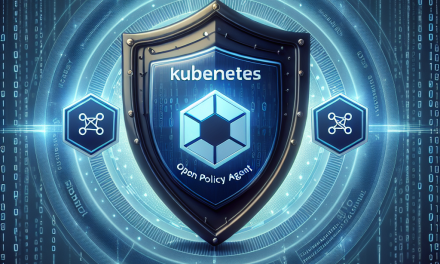Kubernetes has become the go-to platform for managing containerized applications, and its ability to handle complex workloads is particularly exemplified by its StatefulSet feature. StatefulSets are essential for managing stateful applications, such as databases and distributed systems, which rely on unique identifiers, stable storage, and ordered deployment. However, managing these stateful applications requires diligent monitoring to ensure reliability, performance, and scalability. In this article, we will dive into best practices and essential tools for monitoring StatefulSets effectively.
What is a StatefulSet?
Before we explore monitoring, it’s crucial to understand what a StatefulSet is. In Kubernetes, a StatefulSet is a controller that manages the deployment and scaling of a set of pods, ensuring that their identities and storage are maintained. Unlike regular deployments, StatefulSets provide:
- Stable Network Identities: Each pod gets a unique hostname, allowing for predictable network identities.
- Persistent Storage: StatefulSets can be configured to use Persistent Volumes, ensuring data is not lost during pod restarts.
- Ordered Deployment and Scaling: Pods are created, scaled, and deleted in a defined order.
These features make StatefulSets ideal for applications like databases (e.g., MongoDB, Cassandra), message queues (e.g., Kafka), and other components that require persistence and order.
The Importance of Monitoring StatefulSets
Monitoring StatefulSets is vital for several reasons:
-
Performance Optimization: Helps identify bottlenecks in the application and infrastructure, allowing for timely resource adjustments.
-
Reliability: Ensures that the application remains resilient and can withstand failures, facilitating incident response and recovery.
-
Capacity Planning: Assists in evaluating resource usage trends to make informed decisions about scaling.
-
Data Integrity: For stateful applications, monitoring critical metrics can help prevent data loss and ensure the integrity of the data.
Best Practices for Monitoring StatefulSets
1. Define Key Performance Indicators (KPIs)
Establish KPIs relevant to your StatefulSet applications. This could include:
- Latency: How long it takes to process requests.
- Throughput: Number of requests processed over time.
- Error Rates: Frequency of errors encountered during operations.
- Resource Utilization: CPU, memory, and storage use.
2. Use Container-Level Metrics
Utilize container metrics (e.g., resource usage) to gain insights into the performance of each pod in the StatefulSet. This involves monitoring:
- CPU and memory consumption
- Disk I/O
- Network traffic
3. Leverage StatefulSet-Specific Metrics
Some stateful applications may expose specific metrics relevant to their performance and health. For example, if you are using a database StatefulSet, monitor metrics like:
- Query performance
- Connection counts
- Replication lag
4. Set Up Alerts and Notifications
Implement alerting systems to notify your DevOps teams when predefined thresholds are exceeded. This proactive approach to monitoring can prevent issues before they escalate into significant outages.
5. Regular Health Checks and Maintenance
Regularly perform health checks on both the StatefulSet and the underlying infrastructure. This includes:
- Verifying pod statuses
- Checking storage health
- Validating network connectivity
These checks should be automated where possible to ensure consistency.
6. Use Logs for Analysis
Collect logs to analyze application behavior and troubleshoot issues. Logs can provide critical insights into performance anomalies and error conditions. Consider integrating centralized logging solutions like ELK Stack (Elasticsearch, Logstash, Kibana) or Fluentd.
Tools for Monitoring StatefulSets
1. Prometheus and Grafana
Prometheus is a robust monitoring tool that collects metrics from containerized applications in Kubernetes. Coupling it with Grafana allows you to create insightful dashboards to visualize the performance metrics of your StatefulSets.
2. Datadog
Datadog is a comprehensive monitoring solution that provides insights into both infrastructure and application performance. With its Kubernetes integration, Datadog enables monitoring of StatefulSets, complete with pre-built dashboards for your convenience.
3. New Relic
New Relic offers end-to-end observability for applications, including those running in Kubernetes. It provides real-time monitoring for your StatefulSets, helping you to quickly detect performance issues and understand application health.
4. Sysdig
Sysdig focuses on container security and monitoring. Its Kubernetes integration allows you to monitor StatefulSets with rich metrics and enhance security with compliance checks.
5. Kibana
Part of the ELK Stack, Kibana offers visualization features to analyze logs generated by your StatefulSet applications. It can be instrumental in diagnosing issues and understanding application behavior.
Conclusion
Monitoring StatefulSets in Kubernetes is not just a technical requirement; it is crucial for ensuring the stability and performance of stateful applications. By implementing best practices and utilizing the right tools, organizations can achieve greater observability, enabling them to respond swiftly to emerging issues and maintain a high level of application reliability. As Kubernetes continues to evolve, ensuring that your monitoring practices keep pace will be key to unlocking the full potential of your stateful applications.
At WafaTech, we believe that adhering to these best practices can elevate your Kubernetes experience, driving success and efficiency in your containerized workloads.





